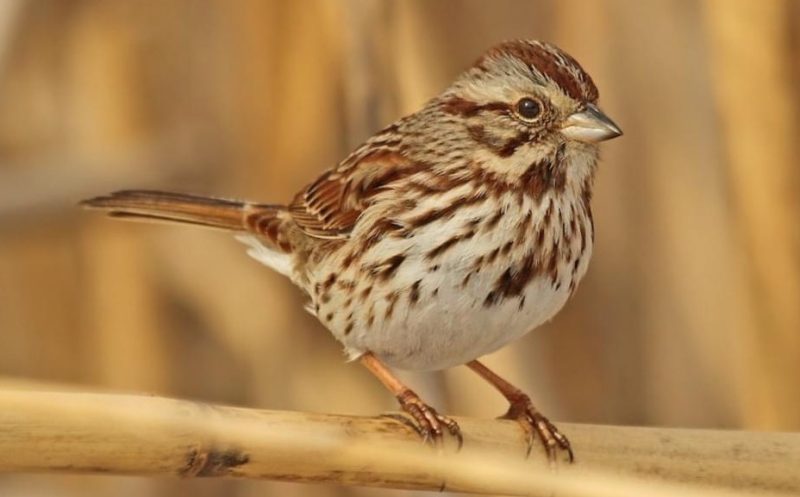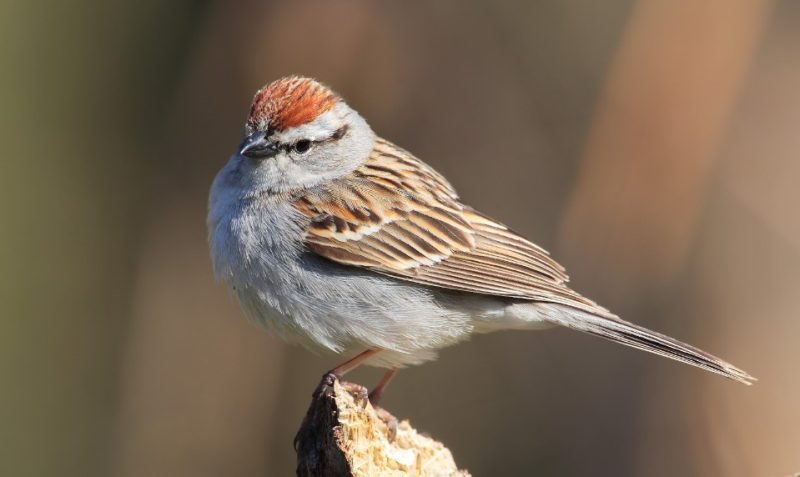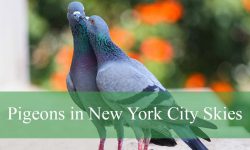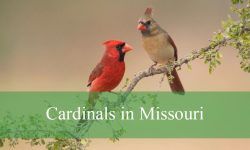At sunrise in Pennsylvania, when the first light spreads across rooftops and tree lines, the air begins to flutter with tiny silhouettes. From porch railings, backyard shrubs, telephone wires, and ivy-covered fences, a chorus of soft chips and bright trills rises into the cool morning. Small brown shapes dart across driveways and gather beneath feeders, their movements quick, careful, and endlessly alive. These are the sparrows in Pennsylvania, familiar yet astonishingly complex — birds that most residents see daily without ever fully understanding their hidden world.
In neighborhoods across Pittsburgh, Philadelphia, Lancaster, Erie, and the quiet rural towns in between, sparrows thrive in an astonishing variety of habits. They forage between parked cars, weave nests beneath eaves, raise families in the shadow of brick chimneys, and sing from maple branches above manicured lawns. But beneath this simplicity lies a surprising story — one filled with intricate behavior, territorial drama, seasonal transformation, and ecological importance.
This article uncovers the hidden lives of three of Pennsylvania’s most common and misunderstood sparrows: the House Sparrow, the Song Sparrow, and the Chipping Sparrow. Though often lumped together as “little brown birds,” these species differ in striking ways, each carving out its own niche in the state’s towns, gardens, and wild edges. Their stories intertwine with Pennsylvania’s seasons, neighborhoods, and people in ways more profound than many would ever imagine.
Meeting the Sparrows of Pennsylvania
The Three Main Species in Neighborhood Environments
Though more than a dozen sparrow species pass through or breed in the state, the three most commonly seen in residential areas are:
-
House Sparrow (Passer domesticus) – The bold urban resident
-
Song Sparrow (Melospiza melodia) – The musical woodland-edge dweller
-
Chipping Sparrow (Spizella passerina) – The gentle bird of lawns and open trees
Each species has its own ecological role, behavioral style, and relationship with human landscapes. Together, they make up the small, bustling presence that animates Pennsylvania’s neighborhoods from spring through winter.
The House Sparrow: The Confident Neighborhood Resident

An Introduced Species With a Dramatic History
The House Sparrow is not native to North America at all. In the 1850s, this species was deliberately introduced from Europe, intended to control insect pests in American cities. What followed was one of the fastest bird population expansions in U.S. history.
Today, the House Sparrow is a familiar resident in Pennsylvania neighborhoods, living closely alongside humans — sometimes more closely than any other bird.
They nest in traffic lights, storefront signs, gas station awnings, barn rafters, and tiny wall cavities in row homes. For many Pennsylvanians, they are the first wild bird children learn to recognize.
Bold Behavior and Social Structure
The House Sparrow is confident, bold, and highly social. Males chirp loudly from rooftops, defending tiny territories around nesting cavities. Females inspect multiple potential homes before choosing one, often examining the quality of material already placed by males.
Their social structure is more complex than most people realize. House Sparrows form small colonies, share information about food, and maintain subtle hierarchies within feeding groups. Their loud “cheep-cheep-cheep” calls are not random noise — they convey warnings, social bonding, and territorial declarations.
Diet and Urban Adaptation
Unlike many sparrows that rely on seeds and insects exclusively, House Sparrows are extreme generalists. In Pennsylvania cities, their diet includes:
-
Seeds
-
Bread crumbs
-
Grain from feed stores
-
Food scraps
-
Insects in summer
-
Fruit from neighborhood trees
This flexible diet allows them to thrive in nearly every residential environment. They forage beneath picnic tables, near bus stops, around schoolyards, and in alleys where spilled food is plentiful.
The Song Sparrow: The Voice of Pennsylvania’s Wild Edges

A Native Species With Remarkable Vocal Talent
While House Sparrows dominate urban centers, the Song Sparrow represents the native woodland-edge sparrow that thrives in suburban gardens, forest borders, and rural areas.
Its rich, intricate song — a varied sequence of clear whistles and buzzy trills — echoes through early spring neighborhoods long before leaves return to the trees.
In Pennsylvania, every valley, backyard, and hedgerow seems to have its own variation of the Song Sparrow’s music.
Territory, Behavior, and Personality
The Song Sparrow is both shy and bold, depending on the season. In early spring, males perch on shrubs or fence posts and sing repeatedly to establish territory. They defend their chosen plots fiercely from rivals, darting into bushes and spreading their tails in warning.
Despite their size, they are among the most territorial sparrows in the state. Yet outside the breeding season, they become calmer, foraging quietly along leaf litter, garden mulch, and berry bushes.
Diet and Ecological Importance
Though seeds form the foundation of their diet, Song Sparrows consume a wide variety of foods:
Their appetite for insects makes them important natural pest controllers in Pennsylvania neighborhoods. Many gardeners unknowingly benefit from their presence, especially during spring when Song Sparrows feed insects to their young at an incredible rate.
The Chipping Sparrow: A Gentle Bird of Yards and Open Spaces

A Delicate Summer Resident
The Chipping Sparrow arrives in Pennsylvania in spring, bringing with it a softer presence than the other two species. With a slender body, bright rusty cap, and clear-eye line, it is one of the most visually distinctive sparrows in the region.
They prefer:
-
Open yards
-
Pines and ornamental trees
-
School campuses
-
Parks
-
Church lawns
-
Quiet residential streets
Their soft, rapid trill is a hallmark of late spring and early summer in Pennsylvania’s suburban and semi-rural neighborhoods.
Nesting and Family Behavior
Chipping Sparrows build small, delicate nests made of grasses, rootlets, and horsehair or fine fibers. These nests are often placed in ornamental shrubs or small trees.
Parents diligently feed their chicks insects — especially tiny caterpillars — ensuring rapid growth in the brief breeding season.
Unlike House Sparrows, which may raise up to four broods, the Chipping Sparrow typically raises just one or two, making each nesting attempt crucial to population stability.
Seasonal Rhythms
While House Sparrows stay year-round, the Chipping Sparrow leaves Pennsylvania in fall, migrating south to warmer climates. This seasonal rhythm makes their arrival in April especially special — a sign that winter has ended and the cycle of new life has begun again.
Their presence becomes a marker of time in many neighborhoods across the state.
Sparrows and the Pennsylvania Landscape
A Neighborhood Ecosystem in Motion
The sparrows in Pennsylvania form a small but essential part of the neighborhood ecosystem:
-
They disperse seeds from native plants.
-
They reduce populations of insects, especially pest species.
-
They feed predators such as hawks, owls, foxes, and outdoor cats.
-
They indicate environmental health — sparrow declines often signal habitat issues.
In this sense, sparrows are not merely backyard visitors; they are tiny cogs in the ecological machinery of Pennsylvania’s towns.
Sparrows Through the Seasons
Spring
Song Sparrows begin singing loudly, House Sparrows start choosing cavities, and Chipping Sparrows return from migration.
Summer
All three species raise young, forage actively, and establish feeding territories.
Autumn
Chipping Sparrows migrate away, Song Sparrows shift to quieter behaviors, and House Sparrows form communal flocks.
Winter
House Sparrows dominate feeders; Song Sparrows remain in mild years, foraging among dried stems and brush piles.
This shifting seasonal cast gives Pennsylvania neighborhoods a unique rhythm tied to sparrow behavior.
Habitat, Nesting, and Daily Life
Where Sparrows Nest in Pennsylvania Neighborhoods
Each species chooses different nesting strategies:
-
House Sparrow: cavities in buildings, vents, lights, signs
-
Song Sparrow: low shrubs, vines, thickets, dense garden vegetation
-
Chipping Sparrow: ornamental trees, conifers, small shrubs
This allows them to coexist without directly competing for nesting real estate.
Daily Routines
Sparrows have predictable daily rhythms:
Morning: singing, foraging, feeding young
Midday: resting in shade during summer heat
Afternoon: second feeding burst
Evening: returning to roosts in bushes or building cavities
This routine plays out in backyards, alleys, garages, and community parks every day.
Social Structure and Intelligence
Communication
Sparrows communicate with:
-
Chips
-
Trills
-
Alarm calls
-
Wing flicks
-
Tail movements
They alert each other to predators, food sources, and intruders.
Memory and Learning
All three species demonstrate impressive learning abilities:
-
Remembering feeder locations
-
Identifying predator patterns
-
Recognizing yard layouts
-
Learning from older birds in the flock
House Sparrows especially excel at adapting to human-made structures.
Threats and Challenges Sparrows Face
Predators
Common predators include:
-
Sharp-shinned hawks
-
Domestic cats
-
Snakes
Urban and suburban predators often have higher densities, creating daily risk.
Habitat Loss
Paved yards, tree removal, and manicured landscaping reduce nesting sites. Native sparrows decline sharply when shrubs disappear.
Competition
House Sparrows often dominate Chipping Sparrows and sometimes outcompete Song Sparrows for prime feeder spots or nesting cavities.
Surprising Facts About Sparrows in Pennsylvania
-
Song Sparrows have regional accents — different dialects exist between counties.
-
House Sparrows can recognize individual humans by face.
-
Chipping Sparrows replace their rust-colored cap with a dull one in winter.
-
Sparrows molt once a year and look surprisingly scruffy during the process.
-
A single sparrow family can consume thousands of insects in spring.
-
House Sparrow nests can weigh over a pound when old material accumulates.
-
Chipping Sparrows migrate thousands of miles but return to the same yard yearly.
-
Song Sparrow males may sing over 20 unique song variations.
-
Sparrows bathe in dust to remove parasites.
-
A group of sparrows is called a “quarrel” or “knot.”
FAQs About Sparrows in Pennsylvania Neighborhoods
Why are sparrows so common in neighborhoods?
Because they adapt well to human landscapes and find abundant food and shelter.
Which sparrow is the most common?
The House Sparrow, especially in urban and suburban cities.
Do sparrows migrate?
Chipping Sparrows do; House Sparrows do not. Song Sparrows sometimes partially migrate.
Are sparrows beneficial?
Yes — they control insects, disperse seeds, and help maintain ecological balance.
How long do sparrows live?
Typically 2–5 years in the wild.
How can I attract sparrows?
Use brush piles, seed feeders, native shrubs, and shallow water sources.
Do sparrows harm other birds?
House Sparrows can be aggressive toward other cavity nesters.
Are sparrows protected?
Song Sparrows and Chipping Sparrows are protected; House Sparrows are not.
Why do sparrows dust-bathe?
To remove mites and maintain feather health.
Do sparrows stay active all year?
House Sparrows do; Song Sparrows and Chipping Sparrows depend on season.
Final Thoughts
The sparrows in Pennsylvania may be small, but their stories are vast — stories of survival, song, migration, and adaptation woven into every corner of the state’s neighborhoods. Whether perched on a city streetlight, singing beside a garden fence, or trilling from a backyard pine, they bring a quiet vitality to daily life.
To watch a sparrow hop across the driveway or disappear into a thicket is to witness a snapshot of Pennsylvania’s natural heartbeat — a rhythm made not by grand spectacles but by the small, steady presence of creatures that have lived beside people for centuries.
In every chirp, flutter, and morning chorus, sparrows remind us that even the most ordinary birds hide extraordinary truths — waiting to be noticed by anyone who pauses long enough to listen.






